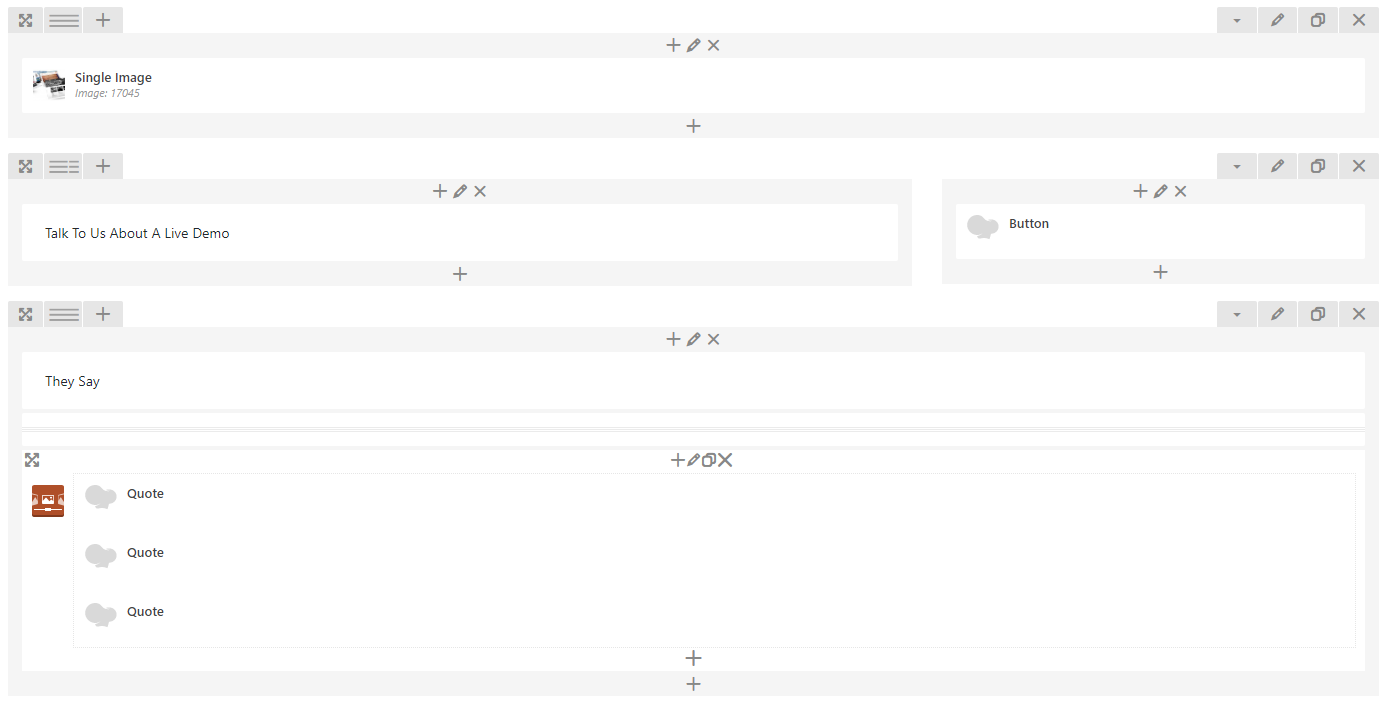We recently started a WordPress project with a client that wanted us to switch their site over to the popular Enfold theme. What we estimated to be a relatively simple theme implementation task soon turned into a full on content restructuring, requiring more time and energy than we initially envisioned. Why, you ask? Enter the sometimes-complex world of custom page-builder plugins.
WordPress version 5 introduced Gutenberg, a visual drag-and-drop page editing tool that replaced the classic text editor and promised an easier, more intuitive way to create new pages and posts. However, long before Gutenberg, third-party plugins like Visual Composer and Cornerstone offered similar options to users who wanted to build complex pages without writing a bunch of HTML and CSS code. These plugins completely change the WordPress editing interface, and years ago were already incredibly more complex than Gutenberg is today.
These plugins really pushed the limits of what was possible in WordPress, but their promise of a code-free building experience wasn’t quite accurate. These tools don’t magically remove the need for code and content formatting, they simply keep all of that behind the scenes. The user sees a lovely screen with different sized rows and columns, all filled up with pre-designed blocks to add amazing visual effects to their blog posts and pages. WordPress, on the other hand, still sees a big chunk of code. Page builders are essentially translators, converting the content back and forth between the two different views.

An example of WPBakery Page Builder‘s editing interface
At this point, let me clarify that page builder plugins are fantastic tools when used correctly. They really lower the barrier of entry, allowing inexperienced users to create beautiful websites. However, it’s important to plan ahead, because once you start using a page building plugin, it becomes much more difficult to switch down the line. Earlier, I described these tools as translators. They interpret the user’s input, and create a formatted piece of text code that gets stored in the WordPress database. Each page builder has its own proprietary method for formatting this data, and they aren’t interchangeable.
Let’s say you want to build a new landing page for your website using a tool like WPBakery Page Builder. You spend hours carefully planning column layouts, adding graphs and visual design elements; all this possible thanks to the plugins building blocks. Then, a year later, you decide you want to switch your theme to Enfold, which comes with its own proprietary page building tool. So you install Enfold, deactivate WPBakery and – uh oh. Enfold has no idea how to interpret that big chunk of formatted data from the old plugin. What’s worse – that two thousands words of content you wrote is full of legacy formatting code that you have to clean up before you can even start rebuilding your beautiful landing page in the new tool.
This is the exact situation we ran into with this client. We were lucky; we spotted the problem early on and got on the phone to explain the situation upfront. Our client was very understanding. In the end, they got their new theme, and we reformatted a bunch of their old content, making it simpler and easier to manage moving forward. Win, win.
However, let this serve as a cautionary tale for you. Page builders are powerful tools, and with great power comes great responsibility! Do your research, plan ahead, and if you decide to go all in with one of these tools, be sure it’s one worth sticking with for the long haul!

